
Phyllonorycter trifasciella is a moth of the family Gracillariidae. It is found in Western Europe.

Parornix anglicella is a moth of the family Gracillariidae found in Asia and Europe. It was described in 1850, by the English entomologist Henry Tibbats Stainton, from a specimen from Lewisham, Kent.

Phyllonorycter coryli, or nut leaf blister moth, is a moth of the family Gracillariidae. It is found most of Europe, except the Balkan Peninsula.

Phyllonorycter heegeriella is a moth of the family Gracillariidae. It is found in all of Europe, except the Iberian Peninsula and the Balkan Peninsula.
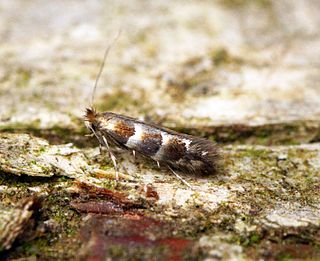
Phyllonorycter nicellii is a moth of the family Gracillariidae. It is found in most of Europe, except the Balkan Peninsula and the Mediterranean islands.
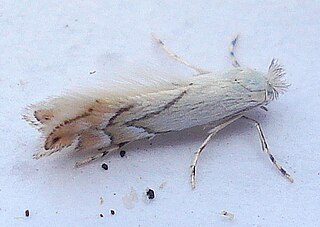
Phyllonorycter harrisella is a moth of the family Gracillariidae. It is found in all of Europe, except the Balkan Peninsula and the Mediterranean islands.
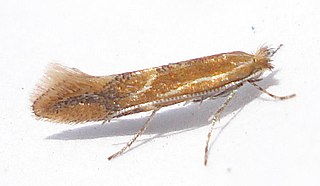
Phyllonorycter corylifoliella, the hawthorn red midget moth, is a moth of the family Gracillariidae. It is found in all of Europe.
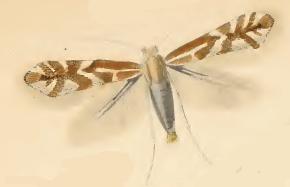
Phyllonorycter viminetorum is a moth of the family Gracillariidae. It is found from Latvia to the Pyrenees and Italy and from Ireland to Ukraine.

Phyllonorycter hilarella is a moth of the family Gracillariidae. It is found in all of Europe, except the Balkan Peninsula and the Mediterranean Islands.

The European oak leaf-miner or Zeller's midget is a moth of the family Gracillariidae. It is found in Europe south of the line running from Ireland, through Great Britain, Denmark to Ukraine. It is also found in Macaronesia. It is an introduced species in New Zealand and Australia.

Phyllonorycter nigrescentella is a moth of the family Gracillariidae. It is known from all of Europe except the Balkan Peninsula.

Phyllonorycter pastorella is a moth of the family Gracillariidae. It is known from all of Europe, east to Russia, China and Japan.

Phyllonorycter quercifoliella is a moth of the family Gracillariidae. It is known from all of Europe, except for the Mediterranean islands.

Phyllonorycter quinqueguttella is a moth of the family Gracillariidae. It is found from Fennoscandia to the Pyrenees, Alps, Hungary and Ukraine and from Ireland to central Russia.

Phyllonorycter rajella is a moth of the family Gracillariidae. It is known from all of Europe, except the Iberian Peninsula and Greece.

Phyllonorycter salicicolella is a moth of the family Gracillariidae. It is known from all of Europe, east to Russia and Japan.

Phyllonorycter spinicolella, also known as the sloe midget, is a moth of the family Gracillariidae, first described by the German entomologist Philipp Christoph Zeller in 1846. It is probably present in all of Europe.
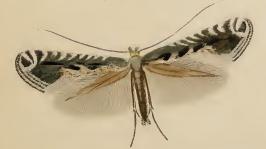
Parornix torquillella is a moth of the family Gracillariidae found in Europe. The larvae mine the leaves of Prunus species, such as blackthorn. It was described by the German entomologist Philipp Christoph Zeller in 1850, from specimens found in Florence, Leghorn and Pisa.
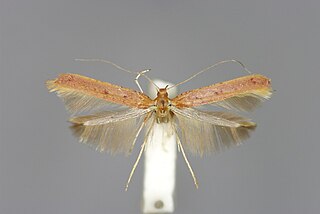
Caloptilia elongella is a moth of the family Gracillariidae. It is known from all of Europe east to eastern Russia. It is also found in North America from British Columbia, south to California and east in the north to New Hampshire and New York.

Bucculatrix ulmella is a moth of the family Bucculatricidae. It is found in most of Europe, except the Iberian Peninsula, Slovenia and Bulgaria. It was first described in 1848 by Philipp Christoph Zeller.

















